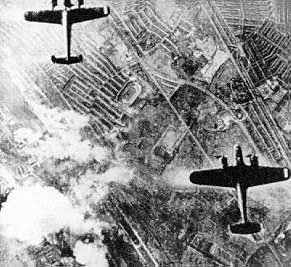

With close air support from the Luftwaffe (German air force) and the benefit of radio communications to aid in coordinating strategy, the Germans blazed through northern France and toward the English Channel, bombing London and other cities while pushing the British Expeditionary Force into a pocket around Dunkirk. In May 1940 came Germany’s invasion of Belgium, the Netherlands and France, during which the the Wehrmacht (German army) used the combined force of tanks, mobile infantry and artillery troops to drive through the Ardennes Forest and quickly penetrated the Allied defenses.
#Blitzkrieg ww2 design series#
Then in April 1940, Germany invaded neutral Norway, seizing the capital, Oslo, and the country’s main ports with a series of surprise attacks. German forces employed some tactics associated with blitzkrieg in the Spanish Civil War in 1936 and the invasion of Poland in 1939, including combined air-ground attacks and the use of Panzer tank divisions to quickly crush the poorly equipped Polish troops. WATCH VIDEO: The Battle of Britain Uses in World War II After Adolf Hitler came to power in 1933 and made clear his intention to rearm the nation, he encouraged younger commanders like Heinz Guderian, who argued for the importance of both tanks and aircraft in this mobile approach to warfare. This focus on mobile warfare was partly a response to Germany’s relatively limited military resources and manpower, following the strictures imposed on it by the Treaty of Versailles.

In the wake of their defeat in World War I, German military leaders determined that a lack of mobile, maneuverable forces and flexible tactics had led that conflict to bog down in the deadly attrition of trench warfare.Īs a result, while France focused its efforts between the wars on building up its defensive border, known as the Maginot Line, the Germans decided to prepare for a shorter conflict won through military maneuvers, rather than in the trenches. Clausewitz proposed the “concentration principle,” the idea that concentrating forces against an enemy, and making a single blow against a carefully chosen target (the Schwerpunkt, or “center of gravity”) was more effective than dispersing those forces. Blitzkrieg-which means “lightning war” in German-had its roots in earlier military strategy, including the influential work of the 19th-century Prussian general Carl von Clausewitz.


 0 kommentar(er)
0 kommentar(er)
